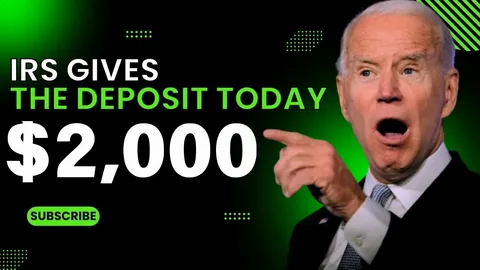Introduction
The IRS direct deposit stimulus is a method the U.S. government uses to deliver financial relief to eligible individuals and families. These payments, also called Economic Impact Payments, are sent directly into recipients’ bank accounts through the IRS system. This process has become a preferred option because it is fast, secure, and convenient. Many Americans rely on these funds to help cover basic needs during tough economic times.
This blog covers what the IRS direct deposit stimulus is, how it works, who is eligible, and what to do if your payment is delayed or not received. If you are expecting a stimulus payment, this guide will help you understand the process better.
What Is an IRS Direct Deposit Stimulus Payment
An IRS direct deposit stimulus payment is money sent by the federal government to eligible individuals to provide economic relief. These payments are part of economic recovery plans passed by Congress during times of national crisis, such as the COVID-19 pandemic. The payments are meant to support people who may have lost jobs, seen reduced income, or faced increased expenses.
The IRS uses its existing tax system to identify who qualifies for the payments. If you filed a recent tax return or receive federal benefits, your information is already in the IRS system, which allows them to send money directly to your bank account.
Why Direct Deposit Is Used
Direct deposit is used by the IRS because it is faster than sending checks by mail. It also reduces the risk of lost or stolen payments. Once the IRS processes the payment, it usually appears in your bank account within a few days.
Using direct deposit also helps reduce paper waste and makes the distribution of funds more efficient. For those who have provided their bank details in past tax filings or on the IRS portal, no further action is usually needed.
Who Is Eligible for the Stimulus Payment
Eligibility for the IRS direct deposit stimulus payment depends on several factors:
-
Income level based on your latest tax return
-
Filing status (single, married, head of household)
-
Number of dependents
-
U.S. citizenship or resident alien status
-
Valid Social Security number
People who fall under income thresholds set by the government typically receive full payments. As income increases, the payment amount reduces and eventually phases out completely. Each round of stimulus checks may have different criteria.
For example, in previous stimulus rounds, individuals earning up to $75,000 and married couples earning up to $150,000 were eligible for full payments. Families with children often received additional money per dependent.
How to Receive Stimulus by Direct Deposit
To receive a stimulus payment by direct deposit, you must have a valid bank account linked to your IRS records. This is usually done through:
-
Filing a tax return with direct deposit information
-
Registering your account on the IRS online portal (Get My Payment or similar tools)
-
Receiving federal benefits like Social Security or Veterans Affairs payments
If your bank information is not on file, the IRS may issue a paper check or prepaid debit card instead. Adding your bank account details ensures you receive funds faster and directly.
How to Check Your Payment Status
The IRS provides tools to check your stimulus payment status. The most common tool is “Get My Payment,” which shows:
-
Whether your payment has been processed
-
The method of payment (direct deposit, check, or debit card)
-
The estimated date of arrival
This tool also helps you confirm that your direct deposit information is current. If you changed banks or closed your account, you might need to update your details or wait for a mailed check.
What to Do If You Did Not Receive Your Payment
If you believe you are eligible but have not received your stimulus payment, here are steps you can take:
-
Check IRS Tools
Use the IRS payment tracking tool to verify your payment status. -
Check Your Bank Account
Sometimes payments are delayed or pending. Make sure your account is active and open. -
File a Tax Return
If you have not filed a recent tax return, do so as soon as possible. This helps the IRS determine your eligibility and where to send the money. -
Claim as Recovery Rebate Credit
If you did not receive a past stimulus payment, you may be able to claim it when you file your tax return through the Recovery Rebate Credit. -
Contact the IRS
If nothing works, contact the IRS directly. Be ready with your personal information and tax documents.
Common Reasons for Delays
Several factors can cause delays in receiving your IRS direct deposit stimulus payment:
-
Incorrect or outdated bank account information
-
Closed bank account
-
Tax return not processed
-
Identity verification issues
-
Payment sent by mail instead of direct deposit
Keeping your IRS records up to date and filing taxes on time can help prevent these issues in future stimulus rounds.
Stimulus Payments and Taxes
Stimulus payments are not considered taxable income. You do not need to include them as income on your federal tax return. However, you should keep a record of the payments you received. This helps when filing your return or checking if you are eligible for additional credits.
If you received less than the full amount or were missed entirely, you can claim the difference when you file your taxes as a Recovery Rebate Credit.
Future Stimulus Payments
Whether more stimulus payments will be issued depends on economic conditions and government policy. New stimulus programs require approval from Congress and the President. If passed, the IRS will likely use the same direct deposit system to distribute payments.
To stay prepared, make sure your tax filings are up to date, and your bank information is current with the IRS. This way, you can receive future payments quickly and without issues.
Benefits of Using Direct Deposit
There are several advantages to receiving stimulus payments via direct deposit:
-
Fast delivery compared to checks
-
Secure and trackable
-
No risk of lost or stolen mail
-
Payments go directly into your account
-
No need to visit a bank or cash a check
This method saves time and reduces stress, especially during emergency situations when financial help is needed quickly.
Conclusion
The IRS direct deposit stimulus is a reliable and efficient way for the government to support citizens during economic challenges. Whether you have received previous payments or are hoping for future ones, understanding how the system works is important.
Make sure your tax information is current, check your eligibility, and monitor your bank account for updates. Stimulus payments can provide timely support when you need it most, and direct deposit remains the fastest way to receive them.
By staying informed and prepared, you can make sure you do not miss out on any financial assistance available to you.












Comments are closed